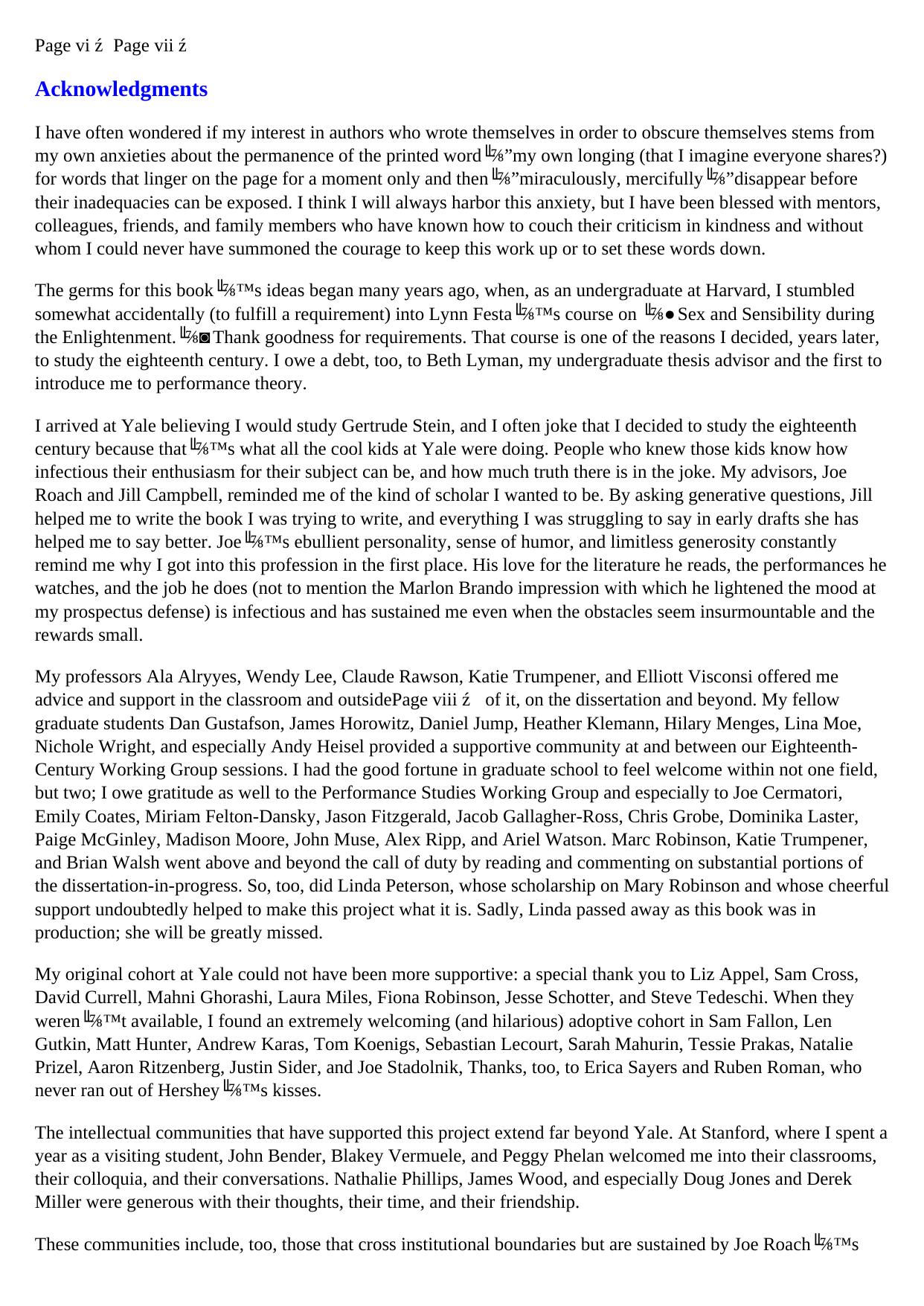Spectacular Disappearances: Celebrity and Privacy, 1696-1801 by Julia H. Fawcett

Author:Julia H. Fawcett
Language: eng
Format: epub, pdf
Publisher: University of Michigan Press
Published: 2018-05-15T00:00:00+00:00
Page 136 →
Chapter 4
The Fate of Overexpression in the Age of Sentiment
David Garrick, George Anne Bellamy, and the Paradox of the Actor
On or about October 19, 1741, theatrical character changed. Or so the critics claimed. It was on that evening that David Garrick debuted on the Drury Lane stage, usurping Cibber’s old role of Richard III (and using Cibber’s—not Shakespeare’s—script). Audiences declared they’d never seen anything like it. Where Cibber stood still to declaim the speeches of the villain-king, Garrick strutted and fretted across the stage. Where Cibber seems to have held his hands just so—as in the engraving of his Lord Foppington by John Simon (figure 4)—Garrick trembled, stumbled, and looked wildly about him—if the rippling fabrics of Hogarth’s David Garrick as Richard III (figure 2) are any indication. Garrick’s contemporaries and his historians credit him with introducing a new, more “natural” style to the eighteenth-century stage, one that applied the tenets of sentimental literature to the art of acting. Exemplified by the novels of Garrick’s friend Samuel Richardson, sentimentality celebrated the raw emotionality and unself-conscious nakedness of feeling that Garrick’s performances seemed to embody.
Yet at the same time that he was hailed as the stage’s harbinger of “authentic” emotion, Garrick also drew praise for his professionalism. Thomas A. King credits Garrick with spearheading the “so-called professionalization of the commercial theater in the eighteenth century, the reconstruction of playing as the acquisition of commercially valuable skills practiced at a distance from one’s personal or ‘authentic’ embodiment.”1 These two qualities seem paradoxical: where the sentimental actor wears his heart on his sleeve, the professional actor segregates his private emotions from his public appearances.Page 137 → Where the sentimental man exhibits heightened and sometimes erratic emotion, the professional man exemplifies consistency, diligence, and the ability to produce the same emotion night after night. I am not the first to remark on the paradoxical nature of Garrick’s dual identities as man of feeling and consummate professional, for they are the qualities that inspired Denis Diderot’s description of Garrick in Paradoxe sur le Comedien (1830), a text to which I will return later in this chapter. What is unique about my approach here is my contention that Garrick’s ability to embody such a paradox owed much to the techniques of autobiographical performance introduced by Cibber and popularized by Sterne. By revising these techniques according to the tenets of sentimentality, I will argue in this chapter, Garrick was able to satisfy his audiences’ demands for powerful emotion onstage while rarely allowing that emotion to taint his private life. Understanding Garrick’s performances in this way helps us to understand both the precedents for his interactions with his public and the influence these interactions had on how later celebrities would manage the distinctions between privacy and publicity.
I am calling Garrick’s particular brand of autobiographical performance the overexpression of sentiment, and its effectiveness hinges on a distinction I would like to make between earnest and mimetic performances.2 The concepts are not difficult to define: an earnest performer
Download
Spectacular Disappearances: Celebrity and Privacy, 1696-1801 by Julia H. Fawcett.pdf
This site does not store any files on its server. We only index and link to content provided by other sites. Please contact the content providers to delete copyright contents if any and email us, we'll remove relevant links or contents immediately.
Call Me by Your Name by André Aciman(20371)
Ready Player One by Cline Ernest(14524)
How to Be a Bawse: A Guide to Conquering Life by Lilly Singh(7391)
Wiseguy by Nicholas Pileggi(5671)
The Kite Runner by Khaled Hosseini(5083)
On Writing A Memoir of the Craft by Stephen King(4863)
Audition by Ryu Murakami(4850)
The Crown by Robert Lacey(4723)
Call me by your name by Andre Aciman(4619)
Gerald's Game by Stephen King(4581)
Harry Potter and the Cursed Child: The Journey by Harry Potter Theatrical Productions(4440)
Dialogue by Robert McKee(4321)
The Perils of Being Moderately Famous by Soha Ali Khan(4169)
Dynamic Alignment Through Imagery by Eric Franklin(4116)
Apollo 8 by Jeffrey Kluger(3637)
Seriously... I'm Kidding by Ellen DeGeneres(3577)
The Inner Game of Tennis by W. Timothy Gallwey(3575)
How to be Champion: My Autobiography by Sarah Millican(3555)
Darker by E L James(3477)
